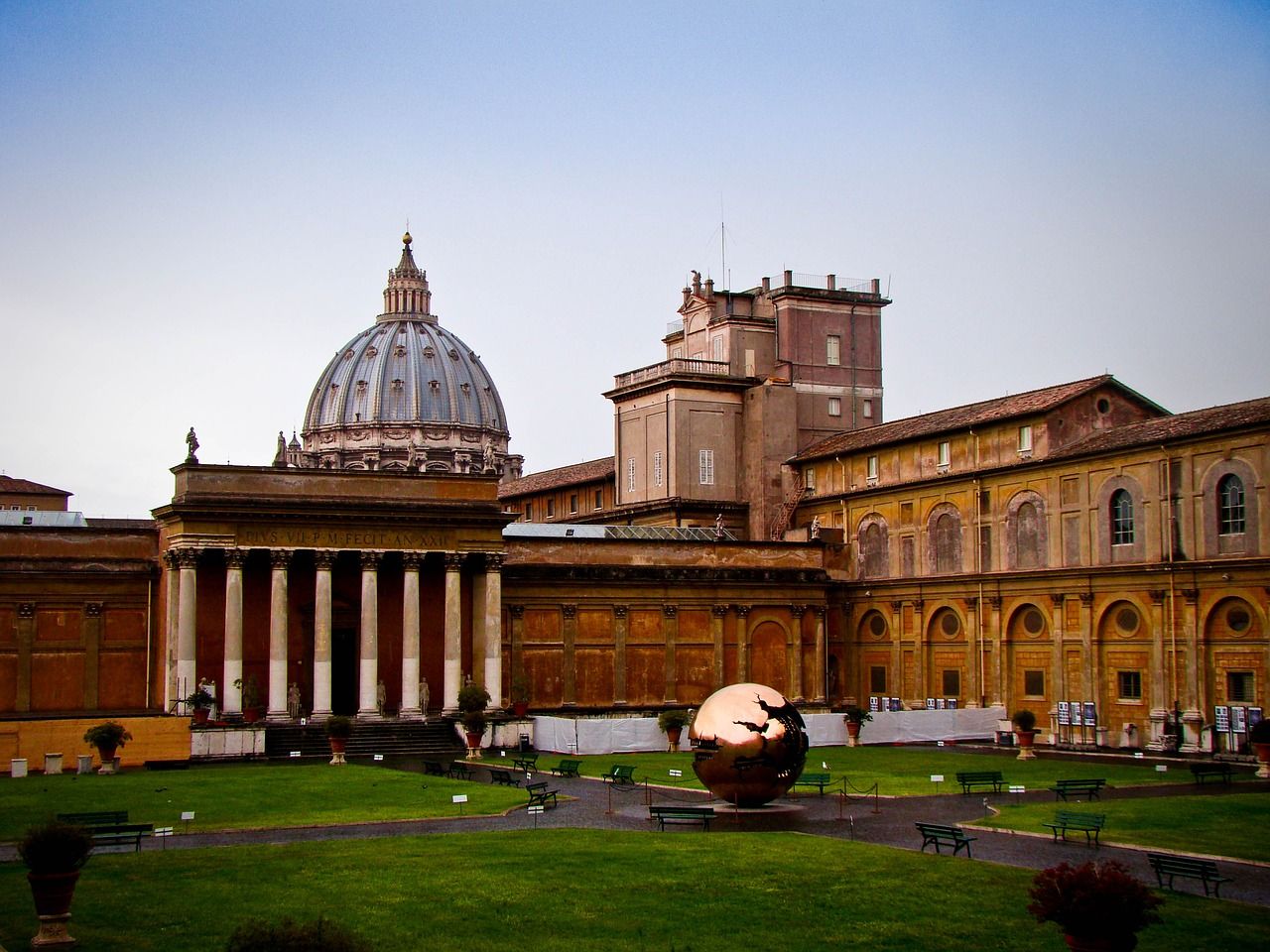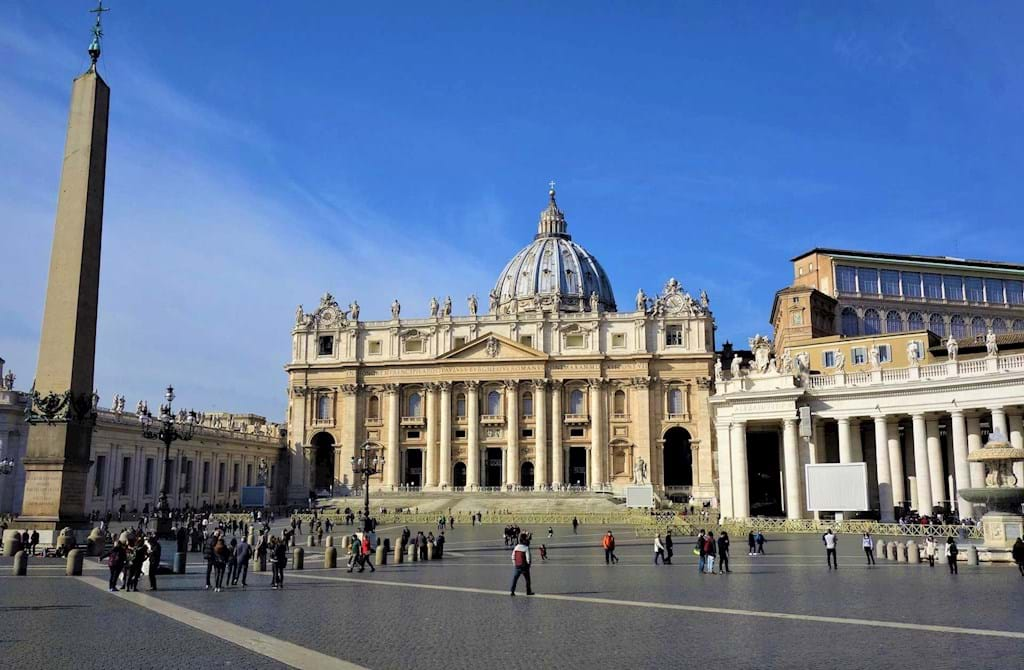The Vatican Museums are Christian art museums located within the city boundaries of the Vatican City. They display works from the immense collection amassed by popes throughout the centuries including several of the most renowned Roman sculptures and most important masterpieces of Renaissance art in the world. The museums contain roughly 70,000 works, of which 20,000 are on display, and currently employ 640 people who work in 40 different administrative, scholarly, and restoration departments.

Pope Julius II founded the museums in the early 16th century. The Sistine Chapel with its ceiling decorated by Michelangelo and the Stanze di Raffaello decorated by Raphael are on the visitor route through the Vatican Museums. In 2017, they were visited by six million people, which combined makes them the 4th most visited art museum in the world. They are one of the largest museums in the world.
The Vatican Museums trace their origin to one marble sculpture, purchased in the 16th century: Laocoön and His Sons was discovered on 14 January 1506, in a vineyard near the basilica of Santa Maria Maggiore in Rome. Pope Julius II sent Giuliano da Sangallo and Michelangelo Buonarroti, who were working at the Vatican, to examine the discovery. On their recommendation, the pope immediately purchased the sculpture from the vineyard owner. The pope put the sculpture, which depicts the Trojan priest Laocoön and his two sons being attacked by giant serpents, on public display at the Vatican exactly one month after its discovery.

Benedict XIV founded the Museum Christianum, and some of the Vatican collections formed the Lateran Museum, which Pius IX founded by decree in 1854.The Museums celebrated their 500th anniversary in October 2006 by permanently opening the excavations of a Vatican Hill necropolis to the public.On 1 January 2017, Barbara Jatta became the Director of the Vatican Museums, replacing Antonio Paolucci who had been director since 2007.
Leonardo da Vinci St. Jerome in Wilderness, 103 x 75 cm.
Giotto di Bondone Stefaneschi Triptych, 224 x 245 cm
Raphael Transfiguration, 405 x 278 cm.
Veronese The Vision of St. Helen, 166 x 134 cm.
Raphael Adoration of the Magi 27 x 50 cm.
Titian Portrait of Doge Marcello
The Collection of Modern Religious Art was added in 1973 and houses paintings and sculptures from artists like Carlo Carrà, Giorgio de Chirico, Vincent van Gogh, Paul Gauguin, Marc Chagall, Paul Klee, Salvador Dalí, and Pablo Picasso.
The museum takes its name from two popes; Clement XIV, who established the museum, and Pius VI, the pope who brought the museum to completion. Clement XIV came up with the idea of creating a new museum in Innocent VIII's Belvedere Palace and started the refurbishment work.
Pope Clement XIV founded the Pio-Clementino museum in 1771, and originally it contained the Renaissance and antique works. The museum and collection were enlarged by Clement's successor Pius VI. Today, the museum houses works of Greek and Roman sculpture.
This museum was founded in the early 19th century by Pope Pius VII, whose surname before his election as pope was Chiaramonti. The museum consists of a large arched gallery in which are exhibited several statues, sarcophagi and friezes. The New Wing, Braccio Nuovo, built by Raffaele Stern, houses statues including the Augustus of Prima Porta, the Doryphoros, and The River Nile. It is in the Classical style and has a wide arched roof with skylights. The colour scheme is blue-grey and white with a polychrome marble floor.
The walls of each side of the gallery have a row of large niches in which stand marble statues. Between the niches are plinths supporting smaller portrait sculptures. The Galeria Lapidaria forms part of the Chiaramonti Museum, and contains over 3,000 stone tablets and inscriptions. It is accessible only with special permission, usually for the purpose of academic study.
This museum houses a large collection of artifacts from Ancient Egypt. Such material includes papyruses, the Grassi Collection, animal mummies, and reproductions of the Book of the Dead.The Gregoriano Egiziano Museum was inaugurated on 2 February 1839 to commemorate the anniversary of Gregory XVI's accession to the papacy.
The creation of the Gregoriano Egiziano Museum was particularly close to the pope's heart as he believed the understanding of ancient Egyptian civilisation was vital in terms of its scientific importance as well as its value in understanding the Old Testament. This feeling was expressed in a paper by the museum's first curator, the physiologist and Barnabite, Father Luigi Maria Ungarelli.
The Vatican Historical Museum (Italian: Museo storico vaticano) was founded in 1973 at the behest of Pope Paul VI, and was initially hosted in environments under the Square Garden. In 1987, it moved to the main floor of the Apostolic Palace of the Lateran where it opened in March 1991.
The Vatican Historical Museum has a unique collection of portraits of the Popes from the 16th century to date, the memorable items of the Papal Military Corps of the 16–17th centuries and old religious paraphernalia related to rituals of the papacy. Also on display on the lower floor are the papamobili, carriages and motorcars of Popes and Cardinals, including the first cars used by Popes.